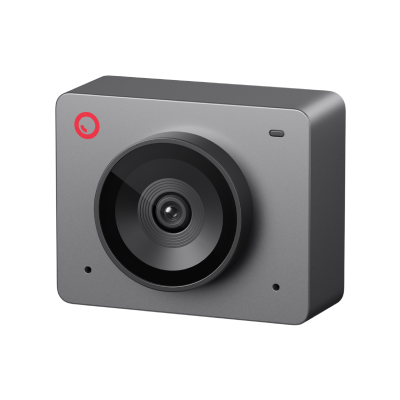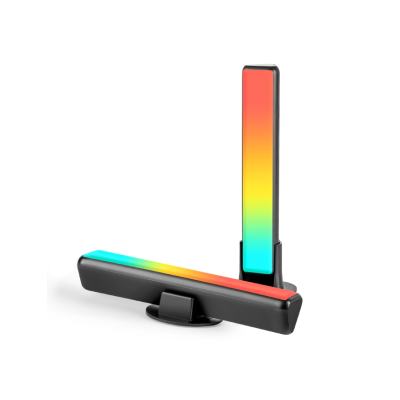Starting soon screens or banners have become more of an essential element of a stream these days. They can provide a great transition between your online/offline content as it can give your streams a custom style and brand that is unique to you and it sets the tone and gives expectations of what’s to come.
What is the Use of a Starting Soon Screen?
There are quite a handful of uses for a starting soon screen, believe it or not, a few of them may be a little funny to hear, especially if you’ve been streaming for a little while. Here are just a handful of reasons why I, among others, use a starting soon screen.
- Avoiding an awkward start
- Having a starting soon screen avoids any awkwardness where you’re making sure everything is running smoothly and your stream is live and running correctly.
- Tech issues
- Having a starting soon screen helps as it gives you time to tinker if needed with any tech issues, which may (and will) arise. No streamer, no matter how professional or how long you’ve been doing it, will ever have any tech issues while streaming. It comes with the job.
- Gives viewers time to come in and get comfortable
- Much like adverts before a movie in the cinema, having a starting soon screen helps viewers all get ready and comfortable to watch/listen to your content and not miss anything by you starting straight away, especially if you’re playing a story game.
- You can provide some pre-stream entertainment
- By this, I mean you could have something like clips playing, interactive chat games, or even just typing to your viewers before going “live” on your main screen.
- You can grab refreshments!
- It’s always a great idea to grab some snacks and most importantly, drinks to help you get through your stream, this way, you can also implement the “Hydrate” channel point reward (if you’re affiliate or partner) so chat can get you to drink more and keep you hydrated for stream. It also gives your audience the chance to do the same!
- You can post to social media
- The starting soon screen gives you time to post updates across socials like Discord, Instagram, X (Twitter), Bluesky, and any other social platforms you use to get the most out of your presence online.
- Lastly, but certainly not least, nerves.
- Sometimes hitting that Start Stream button can be the one thing that stops you from going live, especially if you’ve taken a little break or holiday, but having a starting soon screen can help you get that adrenaline flowing and get you over that edge of pressing that button knowing you have a few minutes to get pumped and let those nerves settle before going live!

What are the Best Specifications for a Starting Soon Screen?
There aren’t many specifications to go over in terms of resolution, format, duration, and size, but these are all subjective to the individual streamer and what they want out of their starting soon screen.
In terms of resolution, people tend to think, “I need a 4K starting soon screen to get the most detail.” And while you wouldn’t be wrong, Twitch (until recently) only supported up to 1080p 60fps, so rendering a 4K file just to have it downscaled was pretty much a waste of resources. Now that Twitch is starting to support 1440p (2K), there's a bit more flexibility—but unless you're planning to stream at higher resolutions and bitrates, 4K is still overkill. So, as far as resolution goes, I’d still say stick to 1080p 60fps where possible to get the smoothest scene quality.
Size and format go hand in hand; you want something that’s a high-quality scene but not too big, as it will use more resources when it’s being rendered in OBS, and you would want it to be as smooth as possible.
I’d personally recommend the WebM format if you have an animated starting soon screen, as it provides great quality for an extremely small file size, and this is what I use for my screens and alerts. For instance, my starting screen that I animated with the main characters that my friends and I use in Dead by Daylight was a 35-second animation, which the raw file was sitting at over 3 gigabytes, and now it sits at 39 megabytes!
How do I Make a Starting Soon Screen?
If you have an understanding of graphics design and editing, along with the software to create your own, it’s really simple! You don’t need something extravagant or complex; sometimes the simpler designs work better, depending on your vibe.
There are loads of tutorials out there, and all you would need to do is figure out what you would like to have as your starting soon screen and then go ahead and create it in your chosen software.
If you don’t have the creative juices yet to make your own starting soon screen, then you have the option of using services like Nerd or Die, Own3d.tv, and things like Canva to get free or paid stream starting soon templates. But to truly stand out and make your starting soon screen align with your brand, you would need something more, well, you!

There are a few ways you can do this; we will briefly go over the first one, as there’s not much to say about it, and that’s the paid route. This route, while technically you’re not making it yourself, it’s being made for you, and you had to make the money, so I’m putting it in anyway. It is as simple as it sounds: you seek out an artist who provides the service, for example, on Fiverr, Etsy, or communities within the space, discuss what it is that you want, and it gets done. Simple.
DIY’ing it for yourself, however, is a different ballgame. As you know what you want, how you want it to look, and you may not be able to achieve it alone or without paying for software. This is where Canva templates come in; you can always take inspiration from your favourite streamers or even sites like Nerd or Die, Own3d.tv, as we mentioned previously, and truly make it your own by either recreating what you see or getting elements of the design you would like and making the rest yourself.
If you were looking at creating one for free, you can do this by going to a service such as Canva and searching for stream starting soon templates. Once there, you can click the template that you like the most, and then you can start customising from there.

Once you are happy with your design, make sure that it’s in the correct resolution (for this, I would recommend you make it the same resolution as your stream, I.E, 720p, 1080p, 1440p, etc) and click the download button. If it’s an animated project, then download the MP4 file, but if it’s a static image, you can just download the JPG/PNG file.
If you have paid software such as Adobe Photoshop/Premiere/After Effects, then you will have much more freedom to add, remove, and edit elements as your heart's content, along with more in-depth tools to use to achieve your desired goal when it comes to your style of starting screen.
The best part of creating your scenes in paid software is that more often than not, if you’re new or an experienced user of the product but don’t know how to do a certain effect then someone would have probably already thought of it and made a tutorial on it which you could watch and use it.
Lastly, for premium software, you can usually install plugins (like the WebM plugin) to render and export your creations directly in that format, so you can use them in OBS and they’d be a significantly smaller size.
All that’s left to do is to import it to your OBS scene collection, and you’re done. In the next article, I'll show you exactly how to do that!



